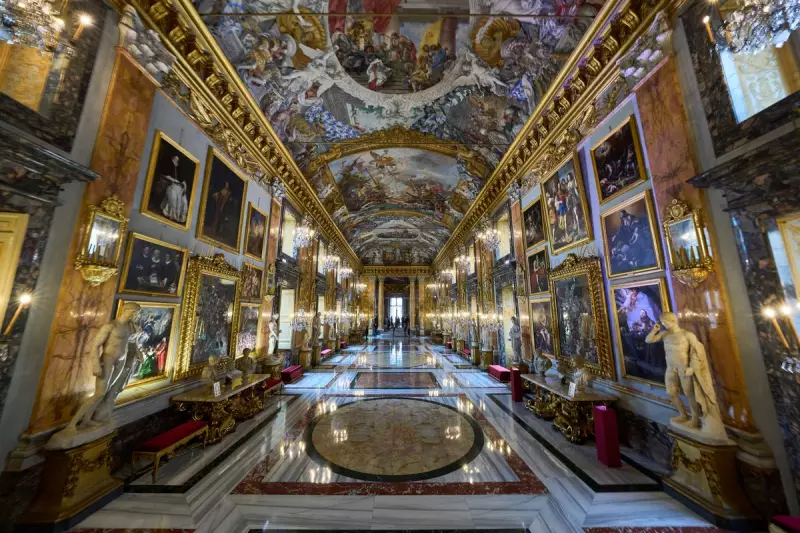
While millions of tourists annually descend upon Rome's Colosseum and Sistine Chapel, a far more exclusive treasure remains largely unseen by the masses. The Colonna Palace, a sprawling private home-museum occupying an entire city block in the heart of the capital, maintains a staunchly cloistered existence, offering only a tiny fraction of visitors a glimpse into its gilded halls.
A Deliberate Seclusion
Entry to this architectural marvel is a privilege, not a commonplace tourist experience. Access is strictly limited to small groups of ten people, guided by art historians, for just a few hours on Friday and Saturday mornings. This is a deliberate policy to protect an extraordinary collection of Baroque paintings, sculptures, busts, and tapestries housed within, including the awe-inspiring, 76-meter-long Great Hall.
Elisabetta Cecchini, a restorer at the palace, explained the philosophy behind this approach. "We cannot have mass tourism. It is not the wish," she stated, adding that the reason visitors are allowed at all is because "art dies in the absence of public appreciation." She was clear that the palace is "not intended as a museum to be commodified."
A Living Legacy of Power and Privilege
The palace is not merely a museum; it is a living residence. The family’s sitting prince, Don Prospero Colonna, still calls it home. His infrequent approvals have permitted events such as the release of Pope John Paul II’s book in 2005 and the 2018 Metropolitan Museum of Art exhibition on Catholic fashion, attended by luminaries like designer Donatella Versace and Vogue's Anna Wintour. These were rare instances where journalists gained admission.
The Colonna family's lineage here stretches back to the 12th century. They are part of the "black nobility," a term for Roman families who remained loyal to the Pope when the Italian army took Rome in 1870 to create a unified Italy. They displayed their mourning by hanging black banners outside their palaces, while fiercely guarding their masterpieces within.
Claudio Strinati, a former superintendent of Rome's museums, supports the palace’s seclusion, calling it "indubitably one of humanity's greatest artistic heritages" that the family has a duty to protect. "These were not conceived as tourist attractions," he noted. "Rather, they are made for those who have a certain understanding of history."
Preserving History Against All Odds
The palace's interior is a testament to centuries of influence. A portrait in the Throne Room immortalises Oddone Colonna, who became Pope Martin V in 1417 and made the palace the papal residence for a decade. The frescoed ceiling of the Great Hall depicts the exploits of Commander Marcantonio Colonna, who won a pivotal 16th-century naval battle that shaped Europe's future.
The survival of these treasures is owed to the cunning of Princess Isabella Colonna. When the Nazis invaded Rome, she fled but first ordered all artworks to be "crammed into a wing of the building whose entrances were then walled up," according to Cecchini. The soldiers never discovered the hidden hoard.
For two centuries, a trust has guaranteed that the palace's precious artworks will remain there forever. Patrizia Piergiovanni, the palace’s gallery director, summarised the profound connection: "We can say that the Colonna cannot exist without Rome, but even Rome cannot exist without the Colonnas. Being one of the great families, they have contributed a lot."
With Princess Isabella’s blessing, the Great Hall, with its marble columns and glittering chandeliers, became the set for the final, poignant scene in the 1952 classic "Roman Holiday." In a moment that echoes the palace's own enigmatic allure, Audrey Hepburn's princess, when asked which city she most enjoyed, replied with firm conviction: "Rome. By all means, Rome." For the fortunate few who gain entry to the Colonna Palace, that sentiment acquires a profound new depth.





